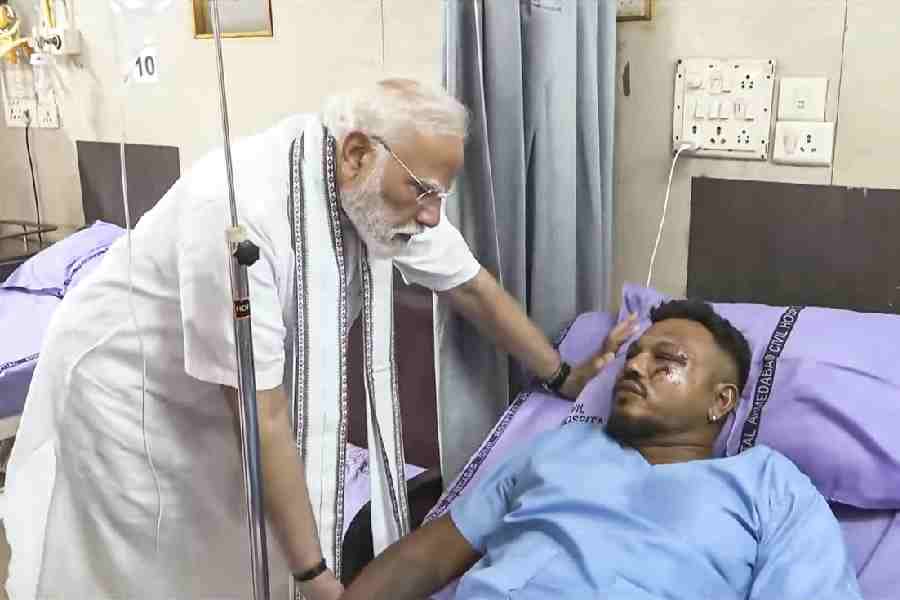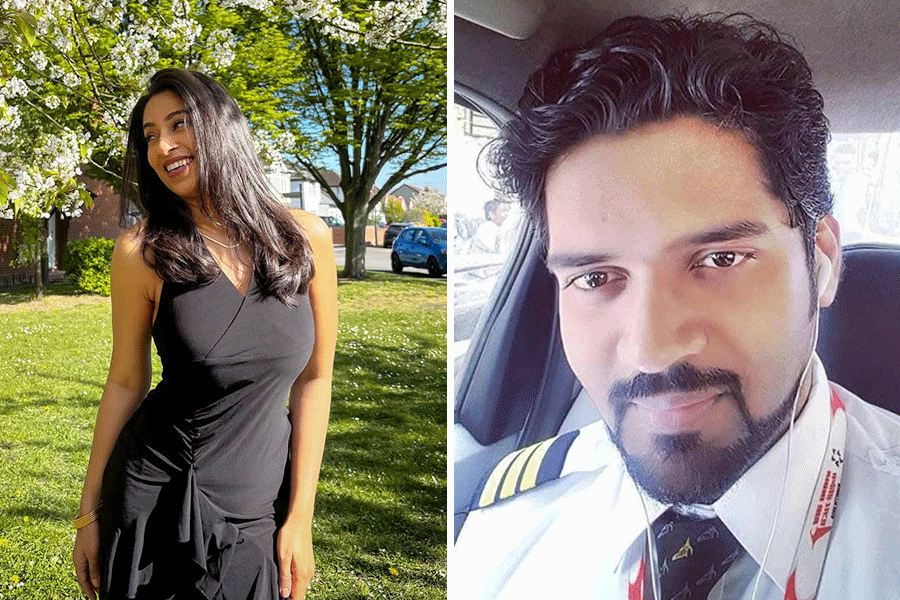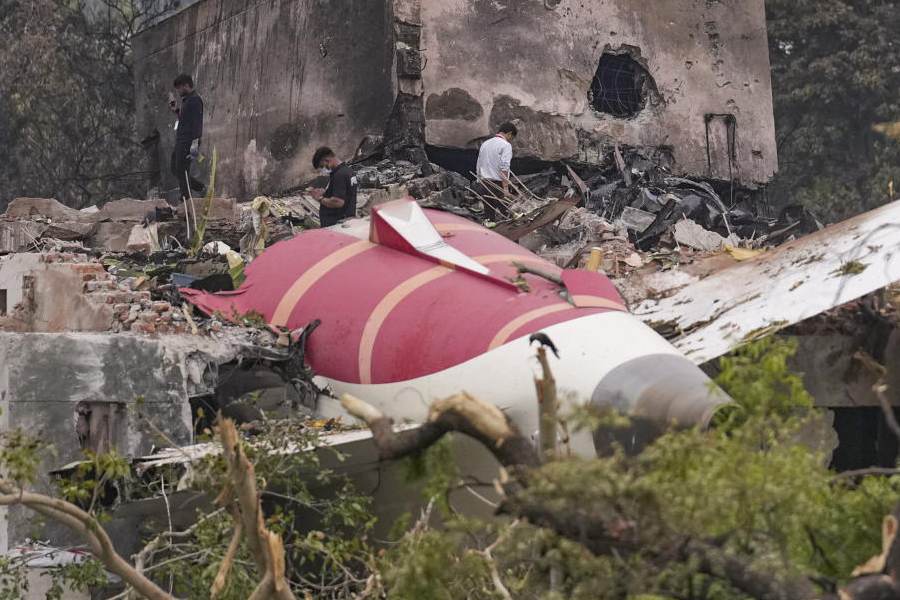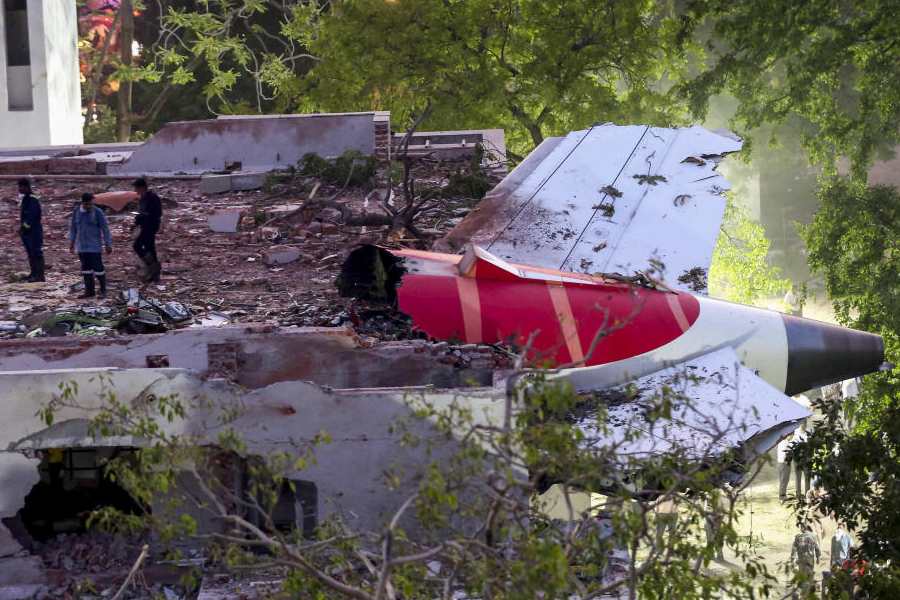
A Howrah mountaineer last month scaled the world's highest peak - in the news this season for more tragedy than triumph - twice in one hour.
Malay Mukherjee first climbed Mount Everest at 5.25am on May 21. While coming down, the 32-year-old met his sherpa guiding two other climbers up the mountain and decided to retrace his steps. He touched the 8,850m summit again an hour later.
The feat - rare, no doubt - has not gone down well with some Everest veterans. Malay, they feel, should not have climbed back because a quick descent is one of the keys to a successful Everest expedition.
"It's not something that should be done. There is a lot of traffic (delaying ascent and descent) these days on Everest. I would say he has done a wrong thing given the risk involved," said Everester Basanta Singha Ray, who accompanied Malay on an earlier climb.
Malay, who has now set his sights on the Alpine peaks of Mont Blanc (4,808m) and Matterhorn (4,478m), left Camp IV for the Everest summit at 7pm on May 20. He reached the peak at 5.25 in the morning. "I stayed at the summit for around 30 minutes, savoured the sights and took pictures before heading down," the Ramrajatala boy recounted.
"On my way down, around 100m below the summit, I met my mentor Pemba Sherpa, who was taking two other climbers up. I told him I wanted to go up with him again because he had to be part of my achievement. Pemba laughed and said. ' Pagal ho kya?' But I still climbed up with him and reached the summit for a second time at 6.25am."
Malay had set out to climb Everest last year, too, but abandoned the plan following the Nepal earthquake on April 25, which triggered an avalanche.
"We were at Gorakshep, the last stop before the base camp, when we suddenly saw a grey cloud coming towards us. It totally engulfed everything. Had we not stopped for lunch and been at the base camp then, we would have been killed by the avalanche," Malay said.
Malay’s Everest dream started in 1998, after attending a rock-climbing camp in Purulia. “Since then I have been going on expeditions every year,” he said.

He did his basic and advanced mountaineering courses from the Himalayan Mountaineering Institute in 2000 and 2002.
After a 90-day trek from Gangasagar to Gomukh, all of 2,500km, in 2003, there was no looking back. “After the trek I knew mountains were my calling,” Malay said.
Before that he had climbed Kedardome in Garhwal in 1999. A year after the Gangasagar-Gomukh, he scaled C.B. 14 (a peak in the Lahaul massif of Himachal Pradesh, which takes its name from the rivers Chandra and Bhaga). “By then the spirit of adventure was firmly seeded in me,” said Malay, who was the youngest Bengali to climb Kamet (7,756m) in 2007.
He went on to climb Satapath (7,077m) in 2008 and Nun (7,135m) in 2012.
“All these are technical peaks. They are more than 7000m-high and are very steep climbs,” said Malay, who was named the Best Mountaineer of the Year in 2015 by the Bengal government.
As part of his preparations for the Everest assault, Malay had spent six months (till a few days before his departure for Nepal) in Ladakh for better acclimatisation in high altitude.
Over the past 13 months, he has claimed Lubeche, Nandaghunti, Ramzak and Stok Kangri.
The mountaineer was better prepared this time, having learnt a lessons from his ill-fated Dhaulagiri (8,167m) climb in 2013.
“At Dhaulagiri, I started feeling uneasy at 7,700m. I decided to take shelter in the tent of a Japanese climber while the rest of my team went ahead. Probably that saved me because there was an avalanche later and two of our team members, Basanta Singha Ray and Debashish Biswas, had to be rescued. The expedition was cancelled. I learnt many things from the failed Dhaulagiri climb. It was my first accident exposure at high altitude,” Malay said.
How did he prepare for Everest? “I run 5km daily and do yoga to keep myself fit. Money was another crucial factor. I had to raise Rs 20 lakh for the expedition,” said Malay, who has trained in physiotherapy and yoga. “Yoga helps me in my mountaineering. I do Pranayam even on the mountains, it helps control breathing.”











